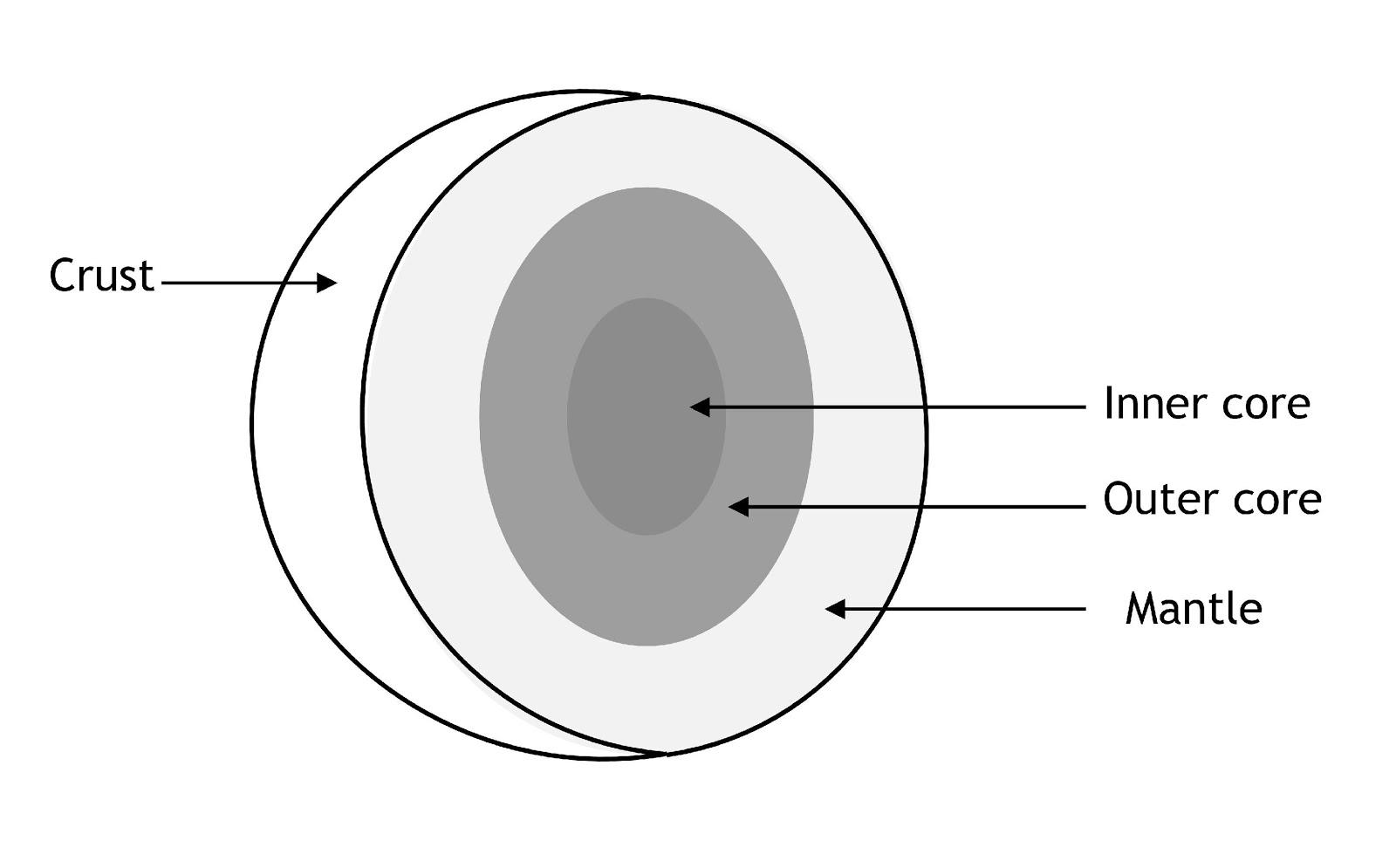Question
Question: The outermost layer of earth is called as A. Mantle B. Outer Core C. Crust D. Inner Core...
The outermost layer of earth is called as
A. Mantle
B. Outer Core
C. Crust
D. Inner Core
Solution
The Earth's outermost layer is composed of igneous, metamorphic, and sedimentary rocks, from mud and clay to diamonds and coal. The most abundant rocks, which are produced by the cooling of magma, are igneous. Igneous rocks such as granite and basalt are abundant in it.
Complete answer: The mantle, which makes up about 84% of the volume of the Earth, is primarily solid but, in geological time, functions as a very viscous fluid.
The outer core is 2300 km wide and has been established to be liquid (based on seismic explorations), spreading to a radius of approximately 3,400 km. The inner core is mostly composed of iron and nickel and has a radius of approximately 1,220 km.
The crust is the planet's outermost layer, the cooled and stabilized portion of the Earth that ranges from around 5−70 km in diameter. This layer makes up just 1 percent of the Earth’s entire thickness, while it makes up the whole surface (the continents and the bottom of the ocean). The thinner sections are the oceanic crust which, at a depth of 5−10 km, underlies the ocean basins, while the thicker crust is the continental crust.
So, the correct answer is “Option C”.

Note: Residual liquid is formed by the freezing of liquid iron into crystalline form at the inner core boundary. More light elements than the overlying liquid are included in it. In turn, this is thought to cause the liquid elements to become buoyant, helping to push the outer core convection. Therefore, through dynamo activity in the liquid outer core, this growth is likely to play an important role in producing the Earth's magnetic field.
